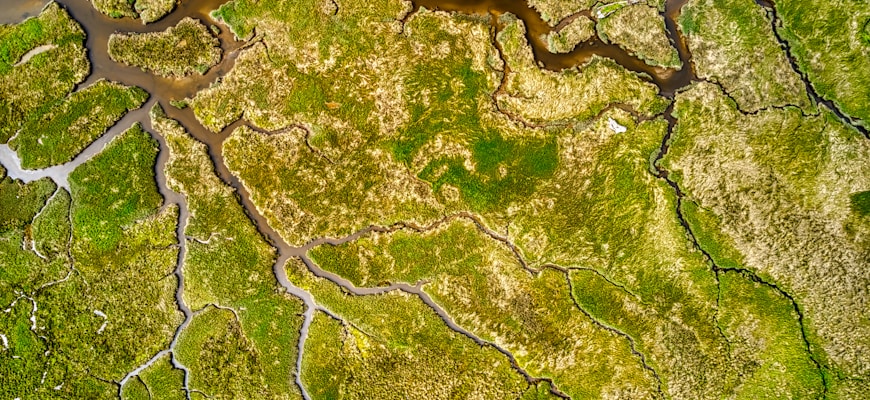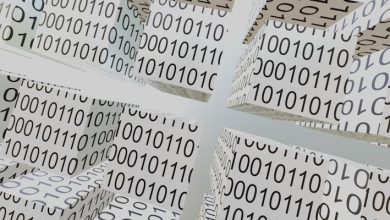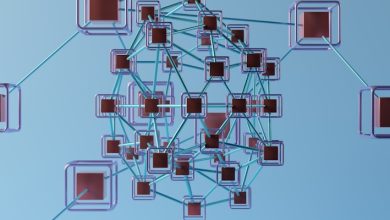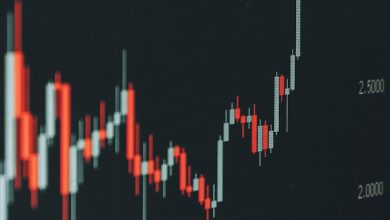The Intersection of Decentralized Ecosystems and NFTs

- Understanding Decentralized Ecosystems and NFTs
- Exploring the Role of NFTs in Decentralized Platforms
- The Evolution of NFTs within Decentralized Ecosystems
- Challenges and Opportunities in the Convergence of Decentralized Ecosystems and NFTs
- NFTs as Catalysts for Innovation in Decentralized Environments
- The Future of Decentralized Ecosystems Enhanced by NFTs
Understanding Decentralized Ecosystems and NFTs
Decentralized ecosystems and NFTs (Non-Fungible Tokens) have been gaining significant traction in the digital space. Understanding these concepts is crucial for anyone looking to navigate the ever-evolving landscape of blockchain technology.
Decentralized ecosystems are built on the principles of decentralization, meaning that they operate without a central authority or intermediary. This allows for greater transparency, security, and trust among participants. NFTs, on the other hand, are unique digital assets that are indivisible and cannot be replicated. They are used to represent ownership of digital or physical items, such as artwork, collectibles, or even real estate.
The intersection of decentralized ecosystems and NFTs opens up a world of possibilities for creators, collectors, and investors. By leveraging blockchain technology, individuals can buy, sell, and trade NFTs in a secure and transparent manner. This has led to a surge in interest in digital art, virtual real estate, and other unique assets that can be tokenized as NFTs.
In this new digital economy, decentralized ecosystems provide the infrastructure needed to support the creation and exchange of NFTs. Smart contracts, which are self-executing contracts with the terms of the agreement between buyer and seller directly written into code, play a crucial role in facilitating these transactions. This ensures that the ownership and authenticity of NFTs are securely recorded on the blockchain.
As the popularity of NFTs continues to grow, so too does the importance of understanding how decentralized ecosystems work. By familiarizing yourself with these concepts, you can position yourself to take advantage of the opportunities presented by this emerging technology. Whether you are an artist looking to monetize your work, a collector seeking unique assets, or an investor diversifying your portfolio, decentralized ecosystems and NFTs offer a new frontier for innovation and creativity.
Exploring the Role of NFTs in Decentralized Platforms
NFTs have emerged as a revolutionary technology within decentralized platforms, offering unique digital assets that can be bought, sold, and traded securely on the blockchain. These non-fungible tokens represent ownership of a specific piece of content or digital asset, providing a level of scarcity and provenance that traditional digital assets lack.
NFTs have opened up new opportunities for creators, allowing them to monetize their work directly and establish verifiable ownership of their creations. This has led to a boom in the digital art market, with artists selling their work as NFTs for significant sums. Additionally, NFTs have extended beyond the art world into areas such as music, gaming, and collectibles, creating a diverse ecosystem of digital assets.
Decentralized platforms have embraced NFTs as a way to empower creators and users, offering a more transparent and secure way to buy, sell, and exchange digital assets. By leveraging blockchain technology, these platforms can ensure the authenticity and scarcity of NFTs, creating a trusted marketplace for digital goods. This has the potential to revolutionize the way we interact with digital content, giving creators more control over their work and users more confidence in the assets they purchase.
As decentralized ecosystems continue to evolve, the role of NFTs is likely to expand, offering new opportunities for innovation and creativity. By exploring the intersection of decentralized platforms and NFTs, we can unlock the full potential of this technology, creating a more inclusive and equitable digital economy for all participants.
The Evolution of NFTs within Decentralized Ecosystems
The evolution of Non-Fungible Tokens (NFTs) within decentralized ecosystems has been a fascinating journey to witness. NFTs have revolutionized the way digital assets are created, bought, and sold, providing a new level of ownership and authenticity to digital art, collectibles, and more.
Within decentralized ecosystems, NFTs have found a perfect breeding ground for innovation and creativity. With the use of blockchain technology, NFTs can be securely stored, transferred, and verified without the need for intermediaries. This has opened up a world of possibilities for artists, creators, and collectors to interact directly with each other in a trustless environment.
As NFTs continue to gain mainstream adoption, we are seeing new use cases emerge within decentralized ecosystems. From tokenizing real-world assets to creating unique gaming experiences, the potential for NFTs is vast and ever-expanding. This has led to a surge in interest and investment in the NFT space, with more and more projects exploring the intersection of decentralized ecosystems and NFTs.
In the future, we can expect to see even greater integration of NFTs within decentralized ecosystems, as developers and creators continue to push the boundaries of what is possible with this innovative technology. As the NFT market matures, we may see new standards and protocols emerge to ensure interoperability and scalability across different platforms and ecosystems. This will further solidify the role of NFTs as a key pillar of the decentralized economy.
Challenges and Opportunities in the Convergence of Decentralized Ecosystems and NFTs
The convergence of decentralized ecosystems and NFTs presents both challenges and opportunities for the digital landscape. On one hand, the decentralized nature of these ecosystems can make it difficult to establish trust and verify the authenticity of NFTs. This lack of central authority can lead to issues with security and ownership rights. However, this decentralized approach also opens up new possibilities for creators and collectors alike.
One of the main challenges in this convergence is the need for interoperability between different decentralized platforms. Without a standard protocol for exchanging NFTs across various ecosystems, there is a risk of fragmentation and limited liquidity. This can hinder the growth of the NFT market and restrict the opportunities available to participants.
On the other hand, the intersection of decentralized ecosystems and NFTs also presents exciting opportunities for innovation and creativity. By leveraging blockchain technology, creators can tokenize their work and establish unique digital assets that are provably scarce and verifiable. This opens up new revenue streams and ways for artists to connect directly with their audience.
Moreover, the decentralized nature of these ecosystems enables greater transparency and peer-to-peer transactions, reducing the need for intermediaries. This can lead to lower costs for creators and collectors, as well as a more democratic and inclusive marketplace. As the technology continues to evolve, we can expect to see even more innovative use cases for NFTs in decentralized ecosystems.
In conclusion, while there are challenges to overcome in the convergence of decentralized ecosystems and NFTs, the opportunities for growth and innovation are significant. By addressing issues of interoperability and security, we can unlock the full potential of this intersection and create a more vibrant and diverse digital economy. As creators, collectors, and developers continue to explore the possibilities of NFTs in decentralized ecosystems, we can expect to see exciting new developments that push the boundaries of what is possible in the digital realm.
NFTs as Catalysts for Innovation in Decentralized Environments
NFTs have emerged as a powerful tool in driving innovation within decentralized ecosystems. By leveraging the unique properties of non-fungible tokens, developers and creators are able to tokenize digital assets in a way that was previously impossible. This innovation has led to new opportunities for ownership, collaboration, and monetization in decentralized environments.
One of the key ways in which NFTs are driving innovation is through the creation of new decentralized marketplaces. These marketplaces allow for the seamless exchange of digital assets without the need for intermediaries. This not only empowers creators and collectors but also fosters a more efficient and transparent ecosystem for the exchange of value.
Furthermore, NFTs have the potential to revolutionize the concept of ownership in decentralized environments. By tokenizing assets on the blockchain, individuals can prove ownership of digital assets in a way that is secure and immutable. This opens up new possibilities for fractional ownership, lending, and even governance within decentralized communities.
Overall, NFTs are acting as catalysts for innovation in decentralized environments by unlocking new possibilities for ownership, collaboration, and value exchange. As the technology continues to evolve, we can expect to see even more exciting developments that push the boundaries of what is possible in decentralized ecosystems.
The Future of Decentralized Ecosystems Enhanced by NFTs
The future of decentralized ecosystems is looking increasingly bright with the integration of Non-Fungible Tokens (NFTs). These unique digital assets have the potential to revolutionize the way we interact with blockchain technology, opening up new possibilities for creativity, ownership, and value exchange. By leveraging NFTs, decentralized ecosystems can empower individuals to truly own their digital assets, whether it be art, collectibles, or virtual real estate.
NFTs have the ability to tokenize almost anything, creating a new paradigm where ownership is transparent, secure, and immutable. This has profound implications for decentralized ecosystems, as it allows for the creation of unique digital economies where users can buy, sell, and trade assets with ease. In addition, NFTs can enable new forms of collaboration and incentivization within these ecosystems, fostering a sense of community and shared ownership among participants.
As decentralized ecosystems continue to evolve and grow, the role of NFTs will only become more prominent. These digital assets have the potential to unlock new revenue streams for creators, developers, and users alike, driving innovation and growth within the ecosystem. By embracing NFTs, decentralized platforms can differentiate themselves in an increasingly crowded market, attracting new users and expanding their reach.
In conclusion, the future of decentralized ecosystems enhanced by NFTs is full of promise and potential. By embracing these unique digital assets, platforms can create more engaging and dynamic experiences for their users, fostering a sense of ownership and empowerment. As the intersection of decentralized ecosystems and NFTs continues to evolve, we can expect to see new and exciting applications emerge, driving the next wave of innovation in the blockchain space.



